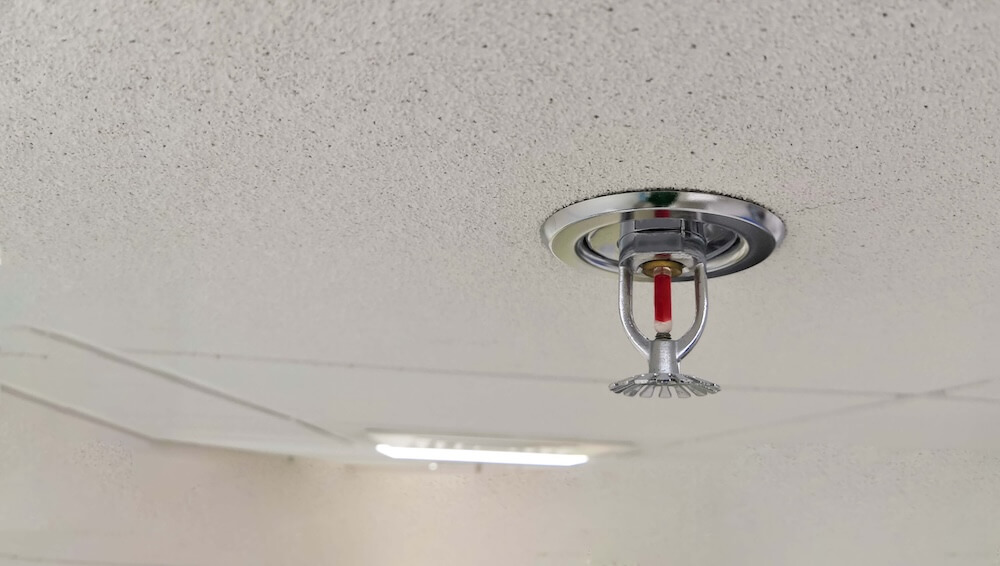
Top Myths and Misconceptions Surrounding Fire Sprinkler Systems, Debunked
When it comes to fire safety, fire sprinkler systems are among the most effective means of preventing the spread of fires in commercial buildings.
However, despite their critical role in safety and property protection, there are numerous myths and misconceptions surrounding their operation, effectiveness, and maintenance. This misinformation often leads to the underutilization of a technology that can save lives and reduce damage in emergency situations.
In this blog, we tackle these myths head-on, driving home the critical importance of fire sprinkler systems and why your business needs them.
Common Fire Sprinkler System Myths
“When one sprinkler goes off, all sprinklers in the building activate.”
One of the most common misconceptions about fire sprinkler systems is that when one sprinkler is triggered, all the sprinklers in a building go off simultaneously. This Hollywood-inspired image of indoor rain in every room during a fire is far from accurate. In reality, fire sprinkler systems are designed to activate only where the fire is actually occurring. Each sprinkler head is individually triggered by heat, typically at temperatures around 155-165°F (68-74°C).
This design minimizes water damage and concentrates firefighting efforts where they are needed most.
“Sprinklers can cause more damage than the fire itself.”
Another persistent myth is that fire sprinklers can cause more damage through water than a fire would. However, the truth is that fire damage is far more extensive and destructive than water damage. Fire sprinkler systems are designed to dispense a specific amount of water, which is significantly less than the water output from firefighting hose lines.
Early sprinkler activation helps to control the fire quickly and reduces the amount of water needed to extinguish it completely.
“Fire sprinklers are not effective.”
Numerous studies and real-world incidents have proven the effectiveness of fire sprinklers. According to the National Fire Protection Association (NFPA), the civilian death rate is 89% lower in properties with sprinklers than in properties without them. In addition, sprinklers reduce property damage by about 70% per fire.
Sprinklers work to quickly contain and often extinguish a fire, long before the fire department can arrive on the scene.
“Smoke can trigger fire sprinklers.”
Many people mistakenly believe that smoke from burnt food or steam can activate fire sprinklers, leading to unnecessary water damage. However, fire sprinklers are activated by high temperatures, not smoke. Each sprinkler head contains a heat-sensitive element, such as a fusible link or a glass bulb that breaks at a specific temperature, thereby releasing water only when a significant heat increase is detected.
“Fire sprinklers aren’t necessary if you have smoke detectors.”
While smoke detectors are essential for early fire detection and alerting building occupants, they do nothing to suppress or control a fire. Fire sprinklers complement smoke detectors by actively controlling the fire, reducing heat and smoke levels, and potentially extinguishing the fire before it can cause significant damage or harm.
Relying solely on smoke detectors without an active fire suppression system can leave a property vulnerable to extensive fire damage.
“Fire sprinklers are too expensive and difficult to maintain.”
Considering the potential loss of life and property in a fire, fire sprinklers are a cost-effective safety measure. The installation cost is generally on par with other essential building systems, like plumbing and electrical networks. In terms of maintenance, regular inspections and occasional testing are required, though, fortunately, are not overly burdensome or expensive.
Proper maintenance ensures that sprinkler systems function correctly when needed, offering a good return on investment through enhanced safety and potential insurance savings.
“Fire sprinklers are only effective in containing small, localized fires.”
There’s a misconception that fire sprinkler systems are only useful for small, contained fires and do not perform well in large-scale fire scenarios. However, sprinkler systems are extremely effective at controlling and often extinguishing a wide range of fire sizes and types. Their design allows them to activate early in the fire’s development, preventing the fire from growing and spreading.
This early intervention is key to limiting the scale of the fire and minimizing potential damage and danger.
“Fire sprinklers frequently activate accidentally.”
Concerns about accidental activation are common but unfounded. Fire sprinkler systems are among the most reliable fire protection systems, with statistics showing that accidental activations are exceedingly rare — occurring in less than one in every 16 million installed sprinkler heads per year.
Most accidental discharges are due to mechanical damage or improper maintenance, rather than a flaw in the sprinkler system itself.
“Sprinklers are ugly and ruin the aesthetics of a room.”
While early fire sprinkler systems were often not designed with aesthetics in mind, modern systems offer a variety of designs and can be surprisingly discreet. Concealed sprinkler heads, which can be painted to match the ceiling, virtually disappear into their surroundings.
These systems provide safety without compromising the design or aesthetic appeal of a space.
“Older buildings can’t support modern fire sprinkler systems.”
This myth can discourage owners of older buildings from upgrading to modern fire safety standards. However, with today’s technology and engineering solutions, virtually any building can be retrofitted with a fire sprinkler system.
Specialized designs and installation techniques can accommodate the unique structural aspects of older buildings, ensuring that they, too, can benefit from the lifesaving capabilities of modern fire sprinkler systems.
Take Action for Your Safety
At Kistler O’Brien Fire Protection, we are committed to your safety and the protection of your property. Understanding the real-world benefits and operation of fire sprinkler systems can make a significant difference in emergency situations.
If you’re considering installing a fire sprinkler system or need your current system inspected or maintained, don’t let common myths deter you.
Contact us today to speak with one of our fire safety experts. We’ll help you ensure that your fire protection measures are up to the task, providing peace of mind and a safer environment for everyone.

